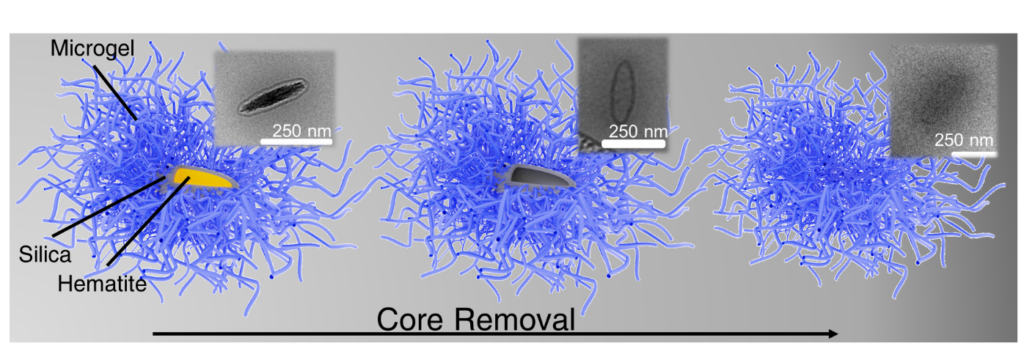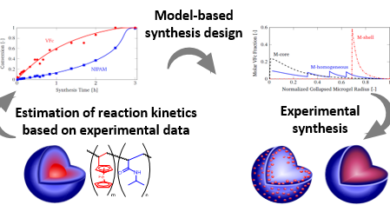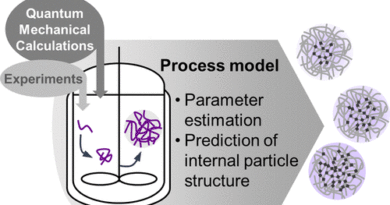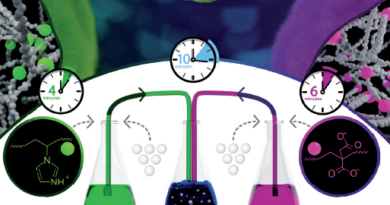Anisotropic hollow microgels that can adapt their size, shape, and softness
This work addresses the challenge of creating hollow and anisotropically shaped thermoresponsive microgels. Sacrificial elliptical hematite silica particles are utilized as a template for the synthesis of a cross-linked N-isopropylacrylamide (NIPAm) shell. By varying the amount of NIPAm, two anisotropic microgels were synthesized with either a thin or thick microgel shell. These precursor core–shell and the resulting hollow microgels were characterized using a combination of light, X-ray, and neutron scattering. New form factor models have been developed for fitting the scattering data. With such models, we demonstrated the existence of the cavity and simultaneously the anisotropic character of the microgels. Furthermore, we show that the thickness of the shell has a major influence on the shape and the cavity dimension of the microgel after etching of the sacrificial core. Finally, the effect of temperature is investigated, showing that changes in size, softness, and aspect ratio are triggered by temperature.

Anne C. Nickel, Andrea Scotti, Joudith E. Houston, Thiago Ito, Jérôme Crassous, Jan Skov Pedersen, and Walter Richtering
Nano Lett. 2019, 19, 11, 8161-8170, DOI: 10.1021/acs.nanolett.9b03507



